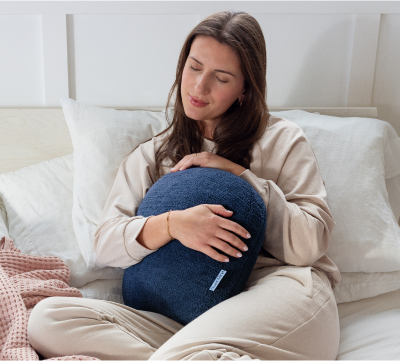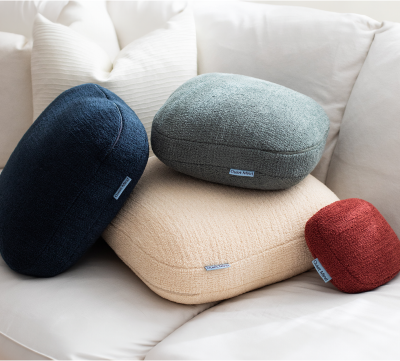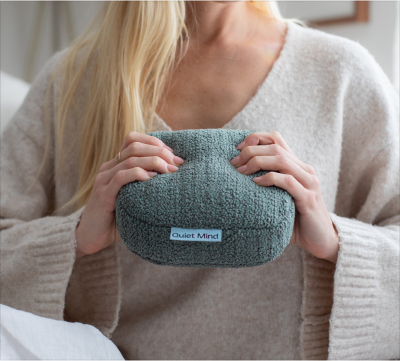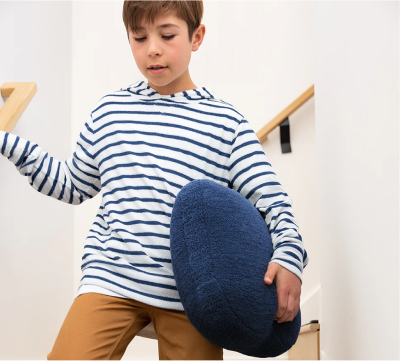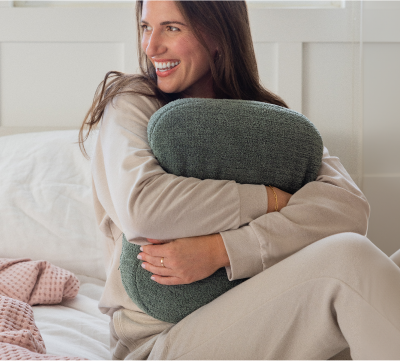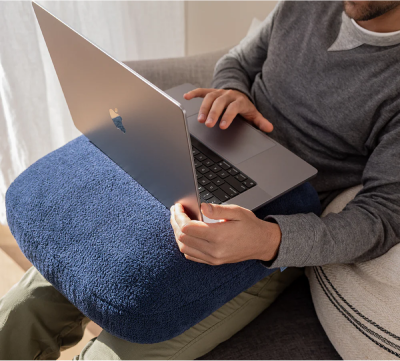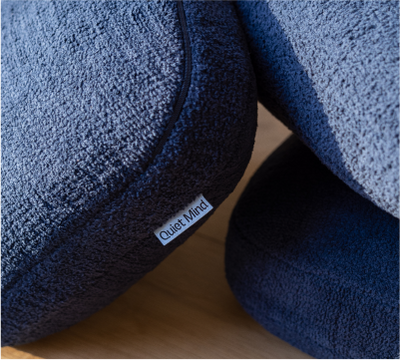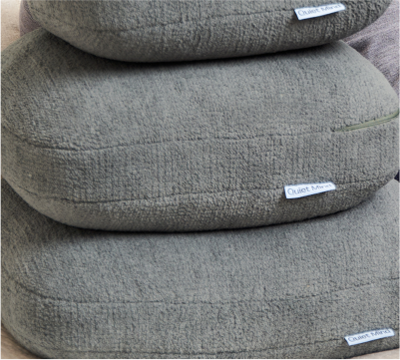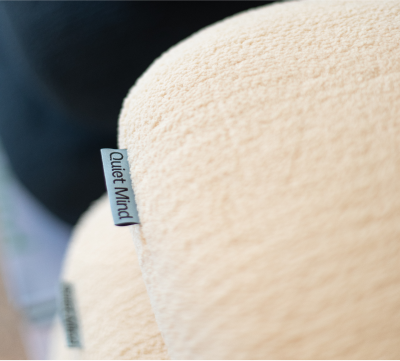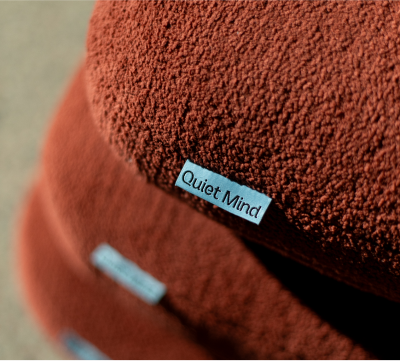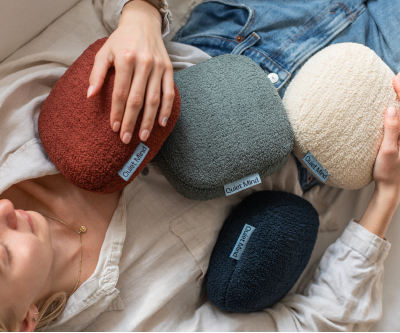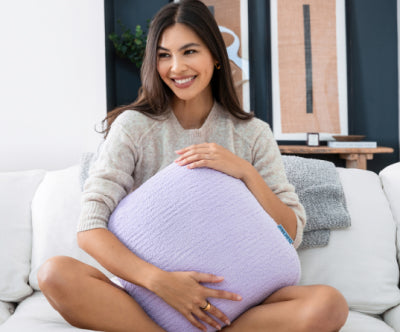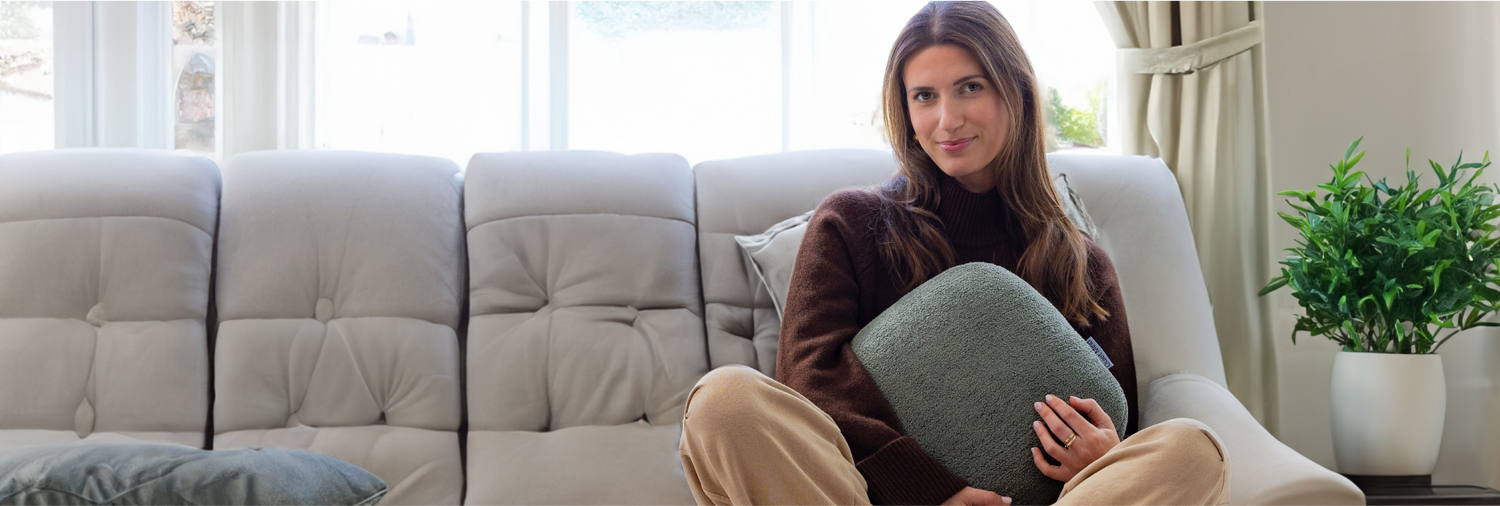For people with sensory processing challenges, managing everyday stress can feel overwhelming. Simple tasks, like focusing in class or unwinding after a long day, can become major hurdles when the body and mind struggle to find calm.
Without the right tools and techniques, this sensory overload can lead to frustration, anxiety, and exhaustion. Below, we’ll explore seven deep pressure activities that provide comforting, calming sensory support for children and adults. These simple techniques reduce anxiety, improve focus, and support self-regulation.
Easy Deep Pressure Activities for Sensory Relief
Deep pressure activities use firm, gentle input, like squeezing, pushing, or hugging, to calm the nervous system. This type of stimulation, known as Deep Pressure Stimulation (DPS), helps reduce anxiety, improve focus, and promote body awareness.
These activities are especially beneficial for adults and children with sensory processing challenges, such as ADHD or Autism, but anyone looking to manage stress can benefit from them. Here are seven simple deep pressure activities you can easily incorporate into your daily routine for sensory relief.
-
Using a Weighted Pillow for Comfort and Focus
A weighted pillow offers one of the most convenient ways to experience the benefits of deep pressure activities. Weighted pillows are portable and easy to use anywhere, whether you’re at home, in the classroom, or on the go. Hugging the pillow, placing it in your lap, or laying it across your chest, provides gentle, firm pressure that helps calm the nervous system, reduce anxiety, and improve focus.
The Original Weighted Pillow from Quiet Mind is designed to deliver this soothing input in a compact, cozy form. Available in three weights and sizes, it’s perfect for children and adults. Its ultra-soft fabric and perfectly balanced weight make it ideal for quick sensory breaks or longer periods of relaxation. Whether you’re helping a child settle down after a busy day or looking for a stress-relief tool for yourself, a weighted pillow offers a simple, convenient way to find calm.
-
Wall Push-ups to Release Energy and Calm the Body
Wall push-ups provide deep pressure input while also engaging the muscles and releasing excess energy. This deep pressure activity is performed by pushing against a wall with controlled, steady movements, which creates firm proprioceptive input that helps regulate the nervous system. It’s a great option for adults and kids who need a quick, structured way to calm their bodies without any special equipment.
To do a wall push-up, stand about an arm’s length away from a wall, place your hands flat against it, and slowly bend and straighten your elbows. The steady pressure against the upper body helps promote focus, reduce stress, and provide grounding sensory input. This activity works well for both children and adults and can be done anywhere for discreet sensory relief.
-
Rolling Therapy Balls Over the Body to Improve Body Awareness
Using a therapy ball to apply gentle, consistent pressure across the body is an effective way to stimulate the proprioceptive system, which helps improve body awareness and promote relaxation. This technique is commonly used in occupational therapy to help children and adults with sensory processing challenges feel more grounded and regulated.
To do this deep pressure sensory activity, roll a large therapy ball (such as a yoga or exercise ball) over different parts of the body with gentle but firm pressure. For younger children, a caregiver can guide the ball along their back, legs, or arms while they lay on a soft surface. Older kids and adults can try self-guided pressure by leaning into the ball against a wall or floor. This deep pressure activity provides calming sensory input, reduces stress, and helps with focus.
-
Compression Clothing for Continuous Sensory Support
Compression clothing provides gentle, consistent deep pressure throughout the day to help children and adults feel more secure and regulated. Compression garments work passively and don’t require active participation, so they’re a great option for those who need ongoing sensory support.
Garments like compression shirts, leggings, or vests are designed to fit snugly without restricting movement. This steady proprioceptive input can help reduce anxiety, improve focus, and support adults and children who experience sensory-seeking behaviors. Compression clothing is especially useful at work or school, or anywhere other deep pressure activities may not be practical.
For best results, choose compression garments that are comfortable and breathable. Since everyone’s sensory needs are different, it may take some experimenting with different styles and fits to determine what works best for you or your child.
-
Massage and Gentle Joint Compressions for Relaxation
Massage and gentle joint compressions are hands-on deep pressure activities that help calm the nervous system and promote relaxation. These methods involve applying gentle pressure to muscles and joints to provide sensory input, which can be especially helpful for adults and kids who struggle with anxiety and sensory overload.
Some simple ways to practice this deep pressure activity is through hand or foot massages, shoulder squeezes, or light joint compressions at the elbows, wrists, or knees. Caregivers can use these techniques to help younger children settle down before bedtime, while older children and adults can try self-massage to relieve stress anywhere.
For best results, use slow, steady pressure. Some people may prefer firmer input, while others prefer a lighter touch. This deep pressure sensory activity is great for encouraging relaxation and body awareness in a soothing, natural way.
-
Squeezable Sensory Tools for On-The-Go Sensory Support
For kids and adults who need discreet and portable deep pressure input, squeezable sensory tools provide an easy way to self-regulate throughout the day. Stress balls, fidget animals, and plush squeeze toys offer a satisfying level of resistance when squeezed, helping to engage the hands and provide calming proprioceptive input.
One great option is a weighted stress ball, like the Mini Squeeze by Quiet Mind. Unlike traditional stress balls, it provides both resistance and comforting weight. Compact enough to take anywhere, it’s a discreet and effective tool for reducing anxiety, improving focus, and easing muscle tension.
Squeezeable sensory tools, like the Mini Squeeze, are especially useful in classrooms, workplaces, or travel settings where larger deep pressure tools may not be practical. They can help adults and kids with sensory processing challenges stay focused, manage anxiety, and reduce sensory overwhelm in overstimulating environments.
-
Using Couch Cushions for Fun and Soothing Pressure Play
Couch cushions can function as a great DIY deep pressure tool in a pinch by offering a fun and engaging way to provide firm, grounding input. This deep pressure activity is particularly beneficial for kids who seek sensory input, but it can also be useful for adults.
One easy way to use couch cushions for deep pressure is the “cushion sandwich technique.” The user lies between two large cushions, which provide gentle, even pressure. Another option is to stack and lean against the cushions for weight input to soothe the nervous system and promote relaxation.
This deep pressure active can be a great alternative when other sensory tools aren’t available. Since everyone’s sensory needs are different, experiment with different levels of pressure and positioning to find the most calming approach.
Who Can Benefit from Deep Pressure Sensory Activities?
Deep pressure activities are beneficial for children and adults who experience sensory processing challenges. Some of the groups that may benefit the most from deep pressure sensory activities include:
Children and Adults with Sensory Processing Disorder (SPD)
People with sensory processing disorder struggle to interpret sensory input, which leads to feelings of overstimulation or under-responsiveness. Deep pressure activities help balance sensory input by providing steady, calming stimulation to make these feelings more manageable.
Adults and Children with Autism
Many people with autism seek proprioceptive input to feel more grounded and secure because their sensory systems process touch and movement differently. Deep pressure activities can help reduce sensory overload and provide a sense of safety. They can also support emotional regulation to make it easier to transition between tasks or environments.
Adults and Children with ADHD
Adults and children with Attention Deficit Hyperactivity Disorder (ADHD) can also benefit from deep pressure activities, especially if they struggle with sitting still or maintaining focus. Deep pressure activities like squeezing a stress ball offer a simple way to engage the body while calming the mind. Incorporating these activities into your daily routine can help promote better concentration at school, work, and in everyday tasks.
Adults and Children with Anxiety or High Stress Levels
Deep pressure stimulation has been shown to activate the parasympathetic nervous system, which helps counteract the body’s stress response. Deep pressure activities can be especially beneficial for those who experience chronic stress and anxiety because the steady, firm pressure signals the brain to slow down and relax.
Anyone Who Enjoys Sensory-Based Relaxation
Even those without specific sensory challenges can benefit from deep pressure activities as part of a self-care routine. These activities can help the body feel more at ease, while also calming the mind. Incorporating these activities into daily life can improve sleep, reduce stress, and help you stay focused at school or work.
Deep pressure activities can be adapted in so many ways. Whether you need a calming tool for daily stress or long-term support for focus and regulation, there’s something for everyone.
Make Deep Pressure a Part of Your Sensory Toolkit
Deep pressure activities offer a simple yet powerful way to support sensory regulation, reduce stress, and improve focus. Techniques like hugging a weighted pillow or squeezing a stress ball provide the calming input the mind and body need to feel more balanced.
If you’re looking for easy-to-use deep pressure tools for yourself or your child, Quiet Mind’s Original Weighted Pillow and Mini Squeeze are designed to deliver effective sensory relief anytime, anywhere. Explore our collection to find the perfect deep pressure tool for you or your loved one.
